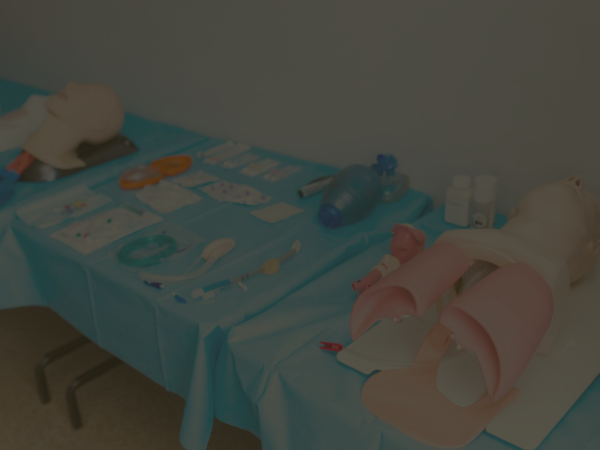Your cart is currently empty!
How to Become a Paramedic: An Essential Guide for You in 2024
Are you looking to learn how to become a paramedic? I’ve created this go-to guide to help you explore paramedic requirements, what to expect, and the specific steps to take to pursue a rewarding paramedic career. Depending on what you’ve done so far, becoming a paramedic can take one to three years. So, now’s the time to get started.
As a first responder, you will save lives. But what’s more, you’ll give those living their worst day a chance to recover, return home to their families, and thrive.
You’re taking on a big responsibility as a paramedic. But that comes with a badge of courage few get to wear.
What Is a Paramedic?
Becoming a paramedic means you will be a licensed health specialist. As a licensed professional, you’ll have a scope of practice. In most cases, that includes providing emergency medical treatments to seriously ill or injured patients remotely (out of hospital). Your goal is to medically stabilize critical patients and transport them to the nearest emergency room via ambulance.
What Is an EMT?
Before you can learn how to become a paramedic, you need to understand what an EMT is. A paramedic is an EMT with advanced medical training and licensure.
A paramedic is an EMT with advanced medical training and licensure.
For this reason, the path to a paramedic career starts with becoming an EMT if you aren’t already one. I want to draw the distinction between a basic EMT and a paramedic to point out just how advanced your paramedic training will be.
Paramedic Vs. EMT: What Are the Differences
Each state has its own licensing requirements and scope of practice, but I can give you an example based on common distinctions. Three primary types of EMT professionals exist in most cases: EMT-B, AEMT, and Paramedic.
An Emergency Medical Technician-Basic (EMT-B) gets to do the following, which is not all-inclusive:
- Make field medical assessments.
- Monitor vitals
- Provide CPR
- Administer injectables like epinephrine or naloxone to people in anaphylactic shock or overdose, respectively.
- Stabilize patients with CPR, AED (advanced external defibrillation), and other methods.
- Administer oxygen
- Drive them to the emergency department
An Advanced EMT (AEMT), which may be an EMT-IV in some states, can do all of the above, plus administer fluids and some medications via IV. They also get to use more advanced medical equipment in the ambulance.
On the other hand, what do paramedics do? A paramedic can do all of the above plus more advanced duties like these:
- Prescribe and provide oral and IV meds
- Set up EKG and other advanced monitoring tools
- Perform a tracheotomy (make a hole in the neck) if the airways are blockedIntubate (insert breathing tubes)
- Manage other EMS professionals
What Are the Education Requirements?
For starters, you will need a GED or high school diploma before you enter a program. So, be sure you have that squared away before starting on your journey into a fascinating paramedic career.
Next, you will complete a basic EMT certificate program. As soon as you become an EMT-B, focus on meeting the requirements to start paramedic school. This will allow you to become a paramedic in the least amount of time.
A paramedic completes either a certificate or associate’s degree paramedic program. However, the National Association of Emergency Medical Technicians (NAEMT. org) says that you can also seek a bachelor’s or master’s degree.
Most paramedics will not need these advanced degrees, but you might if you plan to pursue certain career paths, such as:
- Paramedic instructor
- Safety policy advisor
- Administration
Are Any Certifications or Licenses Needed?
Here are the certifications you care about. Start by earning your EMT-B first, followed by an EMT-P.
Your state might also require you to get an AEMT, EMT-IV, or other intermediate-level certification prior to starting paramedic training. But in most cases, you can jump from EMT-B to EMT-P.
Where Do Paramedics Work?
When you think of a paramedic, you probably see an ambulance in your mind.  But this is only one place a paramedic might work. Depending on your career path, you might do your job in:
But this is only one place a paramedic might work. Depending on your career path, you might do your job in:
- An emergency room also called the emergency department
- Homes, workplaces, and public spaces
- Entertainment venuesNational parks
- A helicopter
- A classroom
Explore These Paramedic Career Paths. The diversity of work locations exists because this advanced license can open up many interesting paramedic career paths, such as:
- Emergency Department Paramedic
- Fire Department Paramedic
- Air Ambulance Paramedic
- Search and Rescue Paramedic
- EMS InstructorIndustrial or Corporate Paramedic
- Sports or Entertainment Paramedic
- Policy, AdministrationCommunity Safety Outreach
- Consulting on Emergency Preparedness
Here is a closer look at a paramedic’s day in the life. Your key duties will fall into one of these categories, and throughout your day, you’ll transition from one responsibility to the next.
Responding to Emergency Calls
You quickly respond to emergency situations to provide medical intervention. You’re often first on the scene for accidents, sudden illnesses, and other medical emergencies.
Assessment and Treatment
You assess patients’ conditions to determine the best course of action. As needed, you perform emergency medical procedures within your scope of practice.
For example, you may need to manage traumatic injuries, administer medications, and use life-support equipment.
Advanced Medical Procedures
Unlike your EMT co-workers, you have the training to perform more complex medical procedures. You can administer IV fluids, use advanced airway management techniques, and give “higher-level” medications.
Monitoring Patients
The lowest-ranking EMT professional on duty will double as a driver. Since you have the highest rank in most field settings, you are not the lowest rank. That leaves you in the back of the ambulance, taking on the most important roles:
- Monitoring the patient’s vital signs and overall condition
- Making necessary medical interventions
- Keeping the patient stable
- Managing the unexpected
Documentation and Communication
As the highest-ranking and most knowledgeable EMS professional present, you must accurately and thoroughly document the trip.
Trying to pass this duty to your EMT co-workers could result in unintentional omissions or errors. It’s not because they aren’t skilled and good at their jobs. They simply are not as skilled as you are.
For this reason, be sure to work on becoming a thorough note-taker when you’re in paramedic training.
Equipment Maintenance
Your advanced training means that you have the qualifications to ensure the readiness of equipment, supplies, and vehicles for the next trip. It is okay for your EMT co-workers to assist you. But you must carry final responsibility for everything being restocked and work for the next call or job.
Staying Current on the Latest Evidence-Based Emergency Protocols
You might do this by subscribing to receive regular updates from a professional organization. However, you’ll also need to complete a certain number of continuing education credits (CE) each two-year licensing period. These are also sometimes called CME. The M stands for medical.
For example, you could take the Advanced Cardiac Life Support (ACLS) certification course to earn up to 8 AMA Category 1 CE online in your spare time.
Find Out About Paramedic Salary & Employment
The U.S. Bureau of Labor Statistics (BLS. gov) expects the need for EMT professionals to grow by 5% in the next decade. That’s faster than average!
The median pay for a paramedic is $53,180. But it looks like some can make as much as $79,430 based on 2023 data.
That said, this amount can vary drastically by state, city vs rural, experience, career path, and job performance.
How to Become a Paramedic: Step By Step
Let’s take a closer look at how to become a paramedic with paramedic requirements, steps, and timeframes.
1. Complete Basic EMT Training and Take the Exam
In just six months, you can complete an EMT-B training program. That means you can start working and making money. If you have to support yourself or your family during this time, that’s important.
In this program, you’ll learn CPR and build a toolbox of useful, non-invasive medical skills to manage some of the most common medical emergencies like injury, allergic reactions, chest pain, and breathing difficulty.
2. Pass a National or State Exam to Become Certified
As soon as you complete the program, you can take the EMT-B exam.
Pass it, and you become an EMT-B.
3. Gain Work Experience
In most cases, you can jump from EMT-B to paramedic without obtaining your AEMT. But I will point out that you must work as an EMT for a period, typically six to 12 months.
Now, once you become an EMT-B, it’s a good idea to begin developing a plan on how to become a paramedic. This includes exploring options for paramedic schooling.
I want to see you become a paramedic as fast as possible. And that six to 12 months will go fast when you are doing a job you love.
4. Earn an Associate of Applied Science Degree or Complete a Paramedic Certificate Program
Next, you have a decision to make. You can choose to go to college or take a certification path.
Here’s what you need to know!
A certificate program can take from 10 months to a year, depending on the program, while an associate’s degree typically takes two years to complete. Certificate programs typically cost less than their college counterpart.
But, there is a caveat. Some debate exists over which is the better path, with some claiming you need the degree to advance your career as a paramedic.
Others say that the paths are more or less equal when it comes to actual paramedic duties. How you become a paramedic isn’t as important as what you do with your training.
Associated degrees often include more general courses like English and Algebra in addition to those required to become a paramedic. The usefulness of non-medical courses for a paramedic’s broad job responsibilites can’t be denied.
According to the International Association of Fire Chiefs (IAFC.org):
“While there’s no evidence that this {associate degree is better} is the case, many of those in academia or in state government profess this will be true… there’s no way to measure or compare the difference in students based on their education.“
So, there is no consensus on this. But some employers may require a degree because they are in that camp of thinking. Because of this, I would suggest you consider a few things in this decision:
- Your goals
- Resources
- The requirements for the job opportunities in your area
- The requirements for the type of paramedic you want to be
Pro Tip: Look at some job listings for your dream job to see what qualifications they prefer.
5. Gain Experience as a Paramedic/EMT with an Externship
Again, this requirement varies by state. So, find out what requirements you have to meet in your area.
The licensing board may require up to around 500 hours of on-the-job training in a paramedic externship program before you can take the exam to get your license.
Note: 500 sounds like a lot, doesn’t it? But if you work 40 hours a week, that’s only 13 weeks, so start studying.
6. Take the Paramedic Exam
Pass the National Registry of Emergency Medical Technicians (NREMT.org) EMT-P exams. These include computer-based and skills demonstration components. So, be ready to demonstrate what you know.
7. Paramedic Recertification
Like most professionals, you will need to renew your license every two years. To earn that privilege, keep your license in good standing by acting professionally, ethically, and within your scope of practice. Plus, you’ll need to complete some continuing education each two-year period.
Every state will have slightly different requirements. For example, in the state of Tennessee (TN.gov), a paramedic must acquire 32 CE every two years. Generally, one credit equals one hour of training, not including the certification exam.
(TN.gov), a paramedic must acquire 32 CE every two years. Generally, one credit equals one hour of training, not including the certification exam.
The Tennessee Department of Health says you must obtain at least 50% of these hours in a classroom setting. That means that you may choose to get 50% (16 credit hours) online from an accredited online continuing medical education provider.
Returning to the Tennessee requirements example, the state requires at least 8 hours CE in pediatric emergency care. You could take an online Pediatric Advanced Life Support (PALS) certification course to meet this requirement.
How to Become a Paramedic (Get Started)
I hope I have you thinking seriously about starting a paramedic career. And I know you’ll want to learn more about how to become a paramedic.
I recommend you begin by exploring the roles of emergency medical services professionals and familiarizing yourself with the important terminology. Most importantly, realize that you have what it takes to become a paramedic. Start by taking a free online Basic Life Support course today.
Frequently Asked Questions About How to Become a Paramedic
Should I do EMT before paramedic?
Absolutely. It’s a requirement. Complete your EMT-B training to become an EMT-B and work in that role before considering a paramedic training program. It’s set up this way to allow you to work as an EMT to support yourself or your family while advancing your education.
How long does it take to become a paramedic in the U.S.?
So, keep in mind that you have both education and work requirements. Together, those will take around three years to complete if you are not currently an EMT. That breakdown looks something like this:
- EMT-B training = three months
- EMT-B work requirements = six to 12 months
- Paramedic school = 10 months to two years
Is becoming a paramedic harder than an RN?
That’s a loaded question. It typically takes longer to become a registered nurse.
A registered nurse usually has a four-year degree. After that, they must complete on-the-job training as well.
A nurse needs to have a broader, less specialized knowledge base. Paramedics are highly specialized.
As for the level of difficulty, how hard is it to become a paramedic? Is it hard to become an RN? I’ll say this in short. That will depend on your strengths, as each professional has different roles and responsibilities within the healthcare system.
How do I get a job as a Paramedic?
Start by learning how to become a paramedic. That starts with becoming a basic emergency medical technician (EMT-B). Work for a period. And then complete paramedic training.
But before you become a paramedic, you’ll still need to complete more on-the-job training called an externship and pass an exam.
Once you have done this, you have the license and experience to apply for most paramedic jobs. After getting your first job, you will have to renew your license every two years. You need to stay on top of those continuing education credits to do that.
This will involve obtaining online continuing education credits. You can do this by completing a course to get certified or recertified in Advanced Cardiac Life Support.







Leave a Reply